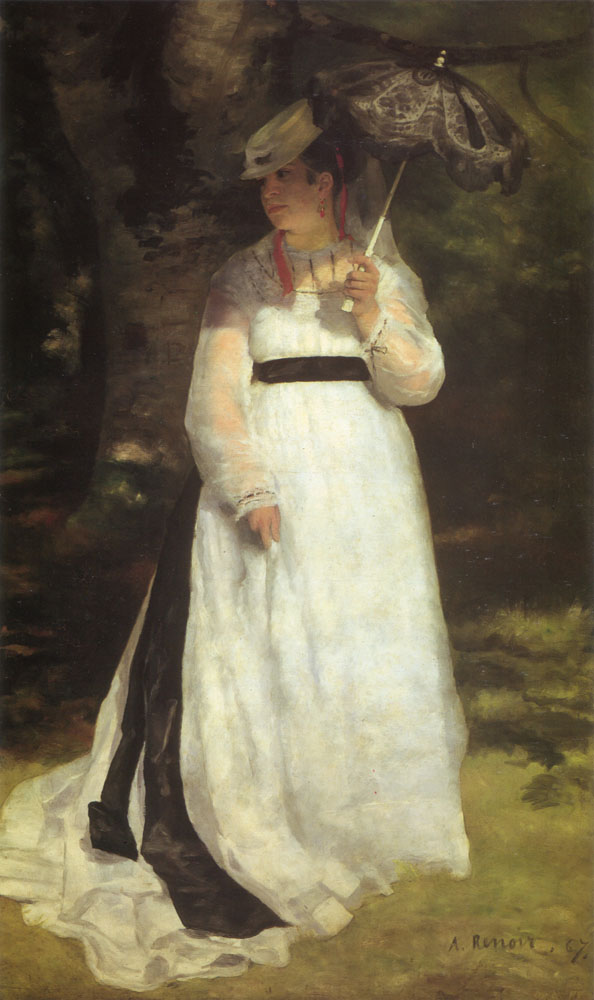Facts About Lise
"Lise" also known as "Lise with a Parasol" is an oil-on-canvas masterpiece by the French artist Pierre-Auguste Renoir. Painted in 1867 during his early Salon period, this artwork features Lise Tréhot, Renoir's frequent model, posing gracefully in a forest. She is dressed in a flowing white muslin dress and holds a black lace parasol, shielding herself from the dappled sunlight filtering through the foliage.
Despite facing numerous rejections at the Salon, Renoir's "Lise" was finally accepted and exhibited in May 1868. This marked one of his first significant successes in the art world.
At this stage in his career, Renoir's style was still influenced by the realist painter Gustave Courbet. However, "Lise" also hints at Renoir's burgeoning fascination with capturing filtered light, a technique that would become prominent in his later works such as "The Swing" and "Dance at Le Moulin de la Galette." Critics had mixed reactions to "Lise"; some found the contrast and portrayal of the model unusual and even ridiculed it. Yet, Théodore Duret, a supporter of the Impressionist movement, recognized its value and purchased it from Renoir when he couldn’t sell it.
In 1901, Karl Ernst Osthaus acquired "Lise" for the Museum Folkwang in Essen, Germany, securing its place in art history.
The painting also provides a glimpse into Renoir's early life, his training, and his struggles with Salon rejections. Lise Tréhot, who modeled for the painting, was a significant figure in Renoir's early career. The critical reception of "Lise" highlighted Renoir's evolving style, noting both his influences and his unique treatment of light and contrast.
The story of "Lise" is a testament to Renoir's developing techniques and the challenges he faced as a young artist. The painting’s journey—from its creation and mixed critical reception to its eventual home in a prestigious museum—offers a comprehensive look at Renoir's growth and the early days of his illustrious career.

 Denmark
Denmark